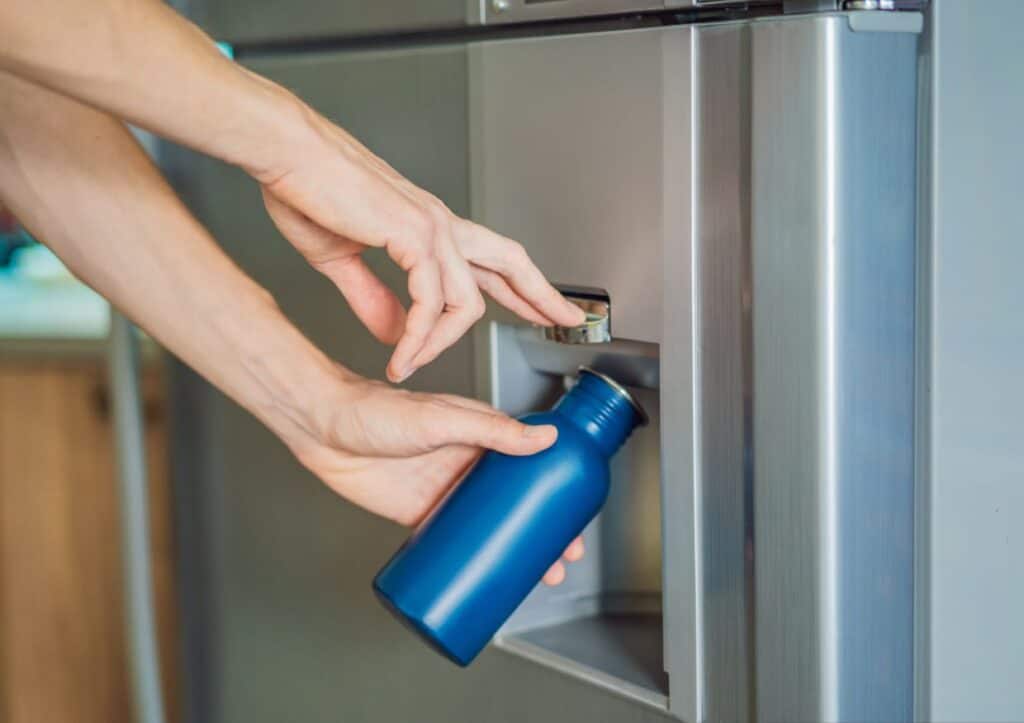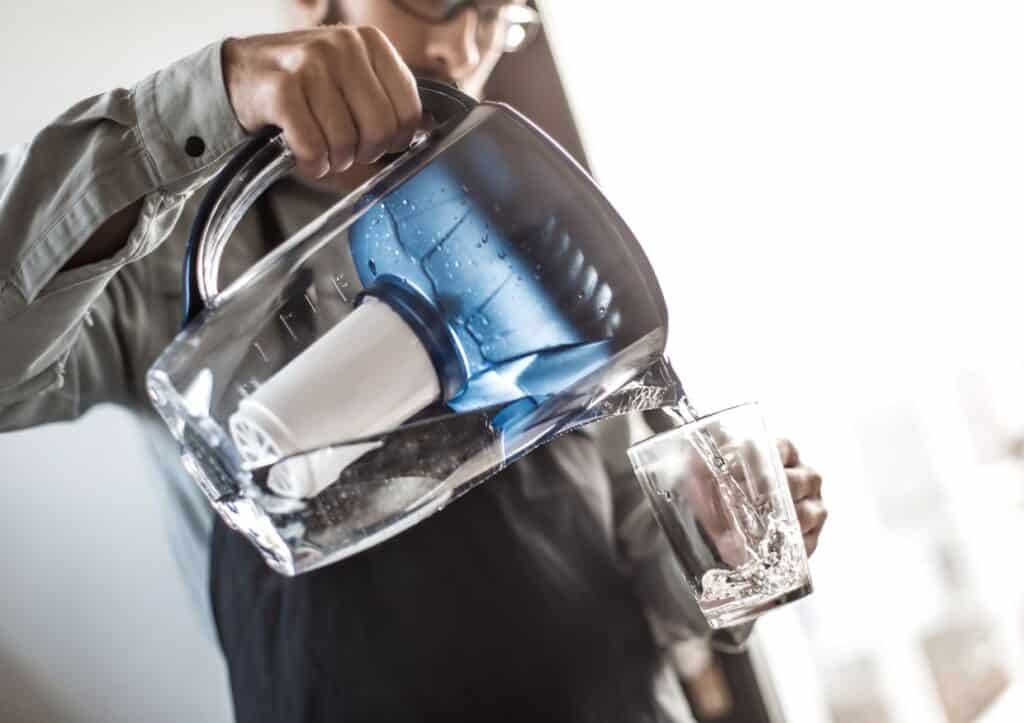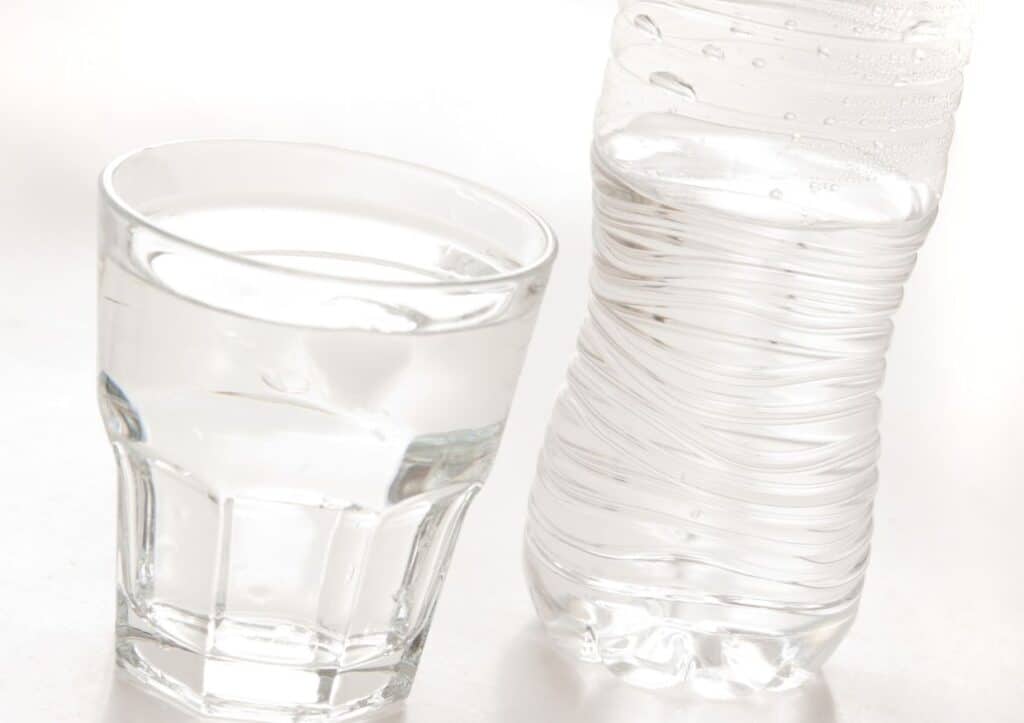Clean drinking water is a basic necessity for human survival. It plays a vital role in maintaining overall health and well-being. Choosing clean drinking water cannot be overstated, as contaminated water can cause serious health issues such as diarrhea, cholera, typhoid fever and hepatitis A.

Several factors can contribute to the contamination of drinking water, including industrial waste discharge, agricultural runoff and sewage disposal systems. Thus, ensuring your drinking water comes from a safe source is essential.
Using water free of impurities for beverages like cold brew coffee and loose-leaf tea will help retain the proper taste and smell. Therefore, choosing the best water benefits your health and enhances your daily indulgences like sipping on an espresso martini or enjoying a refreshing glass of iced blackberry tea on a sunny day.
Water sources
When it comes to drinking water, it’s important to consider its source. Some common drinking water sources include groundwater, surface water, and municipal water systems.
Groundwater is often accessed through wells. It is generally considered safe for drinking if it has been properly tested and treated for contaminants. Surface water, on the other hand, comes from rivers, lakes and reservoirs. While this type of water can be a good source of drinking water if properly treated, it is also more susceptible to pollution from human activities.
Municipal water systems are typically a combination of groundwater and surface water sources treated with chemicals such as chlorine or fluoride to remove harmful contaminants. Researching and understanding where your local supply comes from is important to ensure you get the best drinking water.
Different options for obtaining safe water
One option for obtaining safe water is through public water systems. These systems are regulated by the Environmental Protection Agency (EPA) and must meet certain safety standards. However, some people may still prefer a home filtration system as an added precaution.
Another option is to purchase bottled water. While this is a convenient choice, it can be expensive and create unnecessary waste in the form of plastic bottles. It’s important to check the quality of the bottled water brand being purchased, as not all adhere to the same safety standards.
Portable water filters or purification devices are also available for travelers. These devices, such as straw or bottle filters, come in various forms and can provide safer drinking water from freshwater sources like lakes or streams. Although most filters can remove bacteria and parasites, not all can remove viruses. To be safe, you can boil the water for ten minutes or use a portable UV water purifier to kill viruses.
“Whenever I travel, I bring a reusable water bottle with me. I love that so many airports now have filtered water bottle refills available. I fill mine as soon as I pass through security and again just before I leave the airport. My insulated bottle keeps it fresh and cold for me. In hotels, I use the cups they provide to pour water into my water bottle as needed since the bottle I have doesn’t usually fit under the tap.” — Michelle Price, Honest and Truly

Overall, there are multiple options for obtaining safe drinking water depending on personal preference and circumstances. Researching and choosing a method that best fits individual needs while prioritizing sustainability and environmental impact is important.
Contamination risks
Your drinking water should come from a source tested regularly for contamination. Some water sources can become contaminated with harmful substances from industrial waste, agricultural runoff and sewage overflow.
One of the major concerns when it comes to contamination risks is chemical pollution. Chemicals like lead, arsenic, and mercury can seep into groundwater through industrial activities or natural deposits in the earth’s crust. Over time, drinking water with these chemicals can lead to serious health problems.
Another potential source of contamination risk is microbial pathogens like bacteria and viruses. These pathogens can enter drinking water sources through fecal matter or other forms of human or animal waste. Consuming water containing these microorganisms could cause illnesses ranging from mild stomach upsets to severe diseases like cholera or typhoid fever.
To ensure water is safe for consumption, it should come from a source treated and tested for contaminants regularly. Individuals should also take necessary precautions, such as boiling their tap water before consumption in areas where contamination risks may exist.
Understanding possible pollutants in your water
Common contaminants in tap water include lead, pesticides, disinfectants such as chlorine and chloramine, nitrates and bacteria. The presence of these pollutants can vary depending on where you live, the source of your water supply, and the treatment processes used by your local utility.
Lead is a particularly concerning contaminant as it can cause serious health issues if consumed at high levels over time. This metal can leach into drinking water from old pipes or plumbing fixtures. Pesticides are another common pollutant found in tap water that comes from agricultural or landscaping practices.
Disinfectants such as chlorine and chloramine are added to most public drinking water supplies to kill harmful bacteria but may have negative health effects when consumed at high levels over long periods. Many people add home filtration systems to remove these impurities for better drinking water.
Filtration methods
Filtration methods are essential for having the best drinking water at home, as they help remove impurities and contaminants from the water. Several filtration methods are available, each with unique advantages and disadvantages.

One common filtration method is activated carbon filters, which use carbon to remove impurities such as pesticides, herbicides, chlorine and other organic chemicals. These filters can improve the taste and odor of the water.
Reverse osmosis filters are another popular method that uses a semi-permeable membrane to remove mineral ions and other unwanted particles from the water. There are also UV filters use ultraviolet light to destroy microorganisms such as bacteria and viruses present in water.
It’s important to note that no single filter can effectively eliminate all contaminants. Therefore, combining different filtration methods may be necessary for optimal results.
“Ditching plastic water bottles is one of the easiest things we can do to reduce plastic waste. In our home, we installed a filter under the kitchen sink so that any time I turn on cold water, the water out of the faucet tastes great. While on the go, I rely on insulated water bottles that can be filled at hotels, airports and even most restaurants or bars. It may be one more thing to carry, but it’s one less thing to spend money on and one less thing to throw away.” — Renee, Renee Nicole’s Kitchen
Bottled vs. Tap
Bottled water has become a popular choice for those who want to stay hydrated on the go. There are many brands and different types like natural spring water, alkaline water and mineral water. However, it can also be quite expensive compared to tap water and comes with an environmental cost as it generates significant plastic waste that takes years to decompose.

The government regulates public tap water and has to meet certain safety standards before being distributed in homes and businesses. It is often treated with chlorine or other chemicals to ensure it is safe for consumption, and it gets tested for contaminants like lead or bacteria that could make people sick.
If your tap water comes from a private well on your property, you are responsible for regular testing to ensure it’s safety. The Centers for Disease Control and Prevention (CDC) recommends testing drinking water annually in the spring.
While bottled and tap water are generally considered safe for consumption, some differences in taste due to mineral content and processing methods can affect flavor preferences. Some people prefer the taste of bottled water because it may have gone through additional filtering processes or contain natural minerals that give it a unique flavor profile. Ultimately, choosing between bottled and tap water depends on individual needs and preferences.
“Plastic leaks chemicals into the water under extra hot or cold conditions. And because we never know where the bottled water travels from and in what conditions, our family avoids bottled water altogether. Plus, we try to reduce our plastic usage as much as possible to do our part in preserving the environment. We exclusively use tap water at home. We do filter it through our LG fridge filtering system because tap water contains certain contaminants. When traveling we always carry our Brita water bottles that come with a filter. So whether at an airport, hotel or even restaurant we always run the water through our filtered water bottles. This is how we avoid stomach upsets with small kids.” — Tamara, Thriving In Parenting
How to determine if your water is safe
Testing your water is the first step toward determining if it’s safe to consume. You can contact your local health department or a certified laboratory to conduct tests for your drinking water. Usually, they’ll test for common contaminants such as lead, nitrate, arsenic and bacteria that could pose significant health risks.
Another way of checking the safety of your water is by observing any changes in taste or appearance. Strange odors or tastes might indicate contamination by chemicals like pesticides, gasoline or sewage. Cloudy water may suggest high levels of dissolved solids like minerals that could harm individuals with kidney disease.
Finally, staying informed about the source of your drinking water is essential. Groundwater sources are more susceptible to contamination than surface sources like lakes and rivers because they’re not filtered through soil and rock layers before use. If you’re uncertain about the source of your tap water or if it’s prone to pollution from nearby factories or farms, it might be better to invest in a home filtration system as an extra safety measure against potential health hazards.

Key takeaways
While bottled water may seem like an easy solution to ensure safe drinking water consumption, it has its own set of drawbacks that cannot be overlooked. Not only is it expensive but it also comes with excessive plastic waste.
The best drinking water option is investing in a reliable filtration system that can remove impurities while retaining essential minerals. This will provide healthy and tasty drinks and reduce environmental waste caused by plastic bottles.